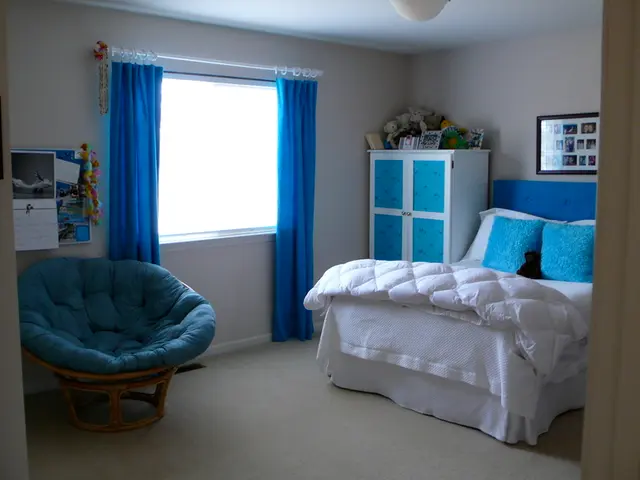Spotting Illegal Builds: How to Avoid Buying a House with Hidden Issues
A Guide for Home Buyers to Avoid Purchasing Property with Unpermitted Construction
Is the color of my house black?
Buy, move in, tear down: It's every homeowner's worst nightmare - buying a property only to discover later that parts of the house were illegally constructed. Such properties are commonly referred to as "black buildings." If this happens, demolition could be imminent.
But how can home buyers protect themselves from this predicament? Here are essential questions with answers.
What Constitutes Illegal Construction?
"Illegal construction exists whenever a building or building part has been erected without the required building permit or deviates significantly from the issued permit," says Inka-Marie Storm from the Homeowners' Association, Haus & Grund. The types of buildings that generally require a building permit vary by state regulations, with municipalities also setting their own rules. regulations.
If a permit was not obtained where it would have been necessary, or if the building deviates from the approved building plans, it constitutes an administrative offense according to lawyer Manuela Reibold-Rolinger. In some cases, it could even have criminal consequences.
Small construction projects are the ones that often avoid obtaining permits, such as garden houses, equipment sheds, carports, or terrace roofings up to a certain size, as well as certain fences.
Common Types of Illegal Construction
"Typically, illegal constructions are addition or alteration projects that were carried out without a permit," explains Manuela Reibold-Rolinger. These projects often include additional rooms, attic conversions, winter gardens, or living spaces in garages. While it is rare for entire houses to be constructed without the appropriate permit, it does happen.
Where are Illegal Constructions Most Prevalent?
Illegal constructions tend to occur more frequently in:
- Newly developed areas, like rapidly growing communities or regions with high housing demands
- Areas outside a valid building plan, sometimes found with weekend or vacation homes, or in less regulated rural regions
- Older buildings where retrofits or self-help projects may not strictly adhere to all regulations
Warning Signs to Look for as a Potential Buyer
As a potential home buyer, you can identify properties with unauthorized modifications or additions by looking for these warning signs:
- No Visible Permit Stickers or Documentation
- Legally permitted construction usually features visible permit stickers, documentation, or posted notices during the project timeline. If you cannot find any trace of permits (either on-site or through paperwork), this could indicate unpermitted work[5].
- Recent Modifications Without Records
- If a property has new rooms, a converted garage, or an extra bathroom but there is no documentation or building permits in the property records, these modifications might be unapproved.
- Discrepancies in Square Footage
- If the advertised or assessed square footage does not match what is officially recorded by local authorities, this may suggest unpermitted additions.
- Visible Code Violations
- Poor workmanship, non-compliant electrical or plumbing work, and insufficient safety features (such as missing fire-rated walls or incorrect stairwells) can be red flags.
- Notices from Authorities or Neighbors
- Any history of complaints, stop-work orders, or legal notices regarding construction activities on the property could indicate past or unresolved illegal construction.
- Unapproved Utility Extensions
- If utilities (like water, electricity, or gas) have been extended to a new structure but there are no permits or records of such work, this is a strong warning sign.
- Insurance or Title Issues
- Insurance providers may refuse coverage for unpermitted structures, and title reports may disclose unresolved building code violations or unpaid fines.
- Signs or Warnings from Previous Owners
- The presence of construction-related signs—such as "No Trespassing" or "Authorized Personnel Only"—may have been used to deter inspectors or authorities from the site, though these signs are not conclusive on their own[1][2][4].
How to Respond if You Discover Illegal Construction Post-Purchase
- Retrospective Approval
- If illegal construction is discovered, one can try to obtain retrospective approval from the building authority. It's best to proactively address this issue than to risk being notified later.
- Seek Professional Guidance
- Consult an architect to review the case before approaching the building authority.
- Warranty Claims and Contract Withdrawal
- If a seller has deceived buyers through false statements, buyers can make warranty claims and potentially withdraw from the purchase contract.
Chances of Obtaining Retrospective Approval
This depends on the individual case. The likelihood of success increases if the building measures comply with building regulations and no public interests (e.g., safety regulations or heritage protection) are at stake. However, approval may be subject to conditions.
Consequences in the Worst-Case Scenario
In the worst-case scenario, authorities may issue a usage ban, order the demolition of the building or part of it at the owner's expense, and impose fines or penalties. Illegal construction can also affect the insurance coverage of a building by increasing the risk.
Sources: ntv.de, Katja Fischer, dpa
- Mortgages
- Real Estate
- Real Estate Prices
- Interest Rates
- Apartment Ownership
- Tenants
- Home buyers must consider the community's employment policy, finance, and investing opportunities to ensure a comfortable lifestyle, especially when making decisions about home-and-garden projects.
- In the process of buying a property, potential buyers should be aware of the business implications of real-estate investments, such as the potential presence of illegal construction, which could lead to costly demolition or usage bans.
- Adequate understanding of the community's employment policies can help homeowners assess the potential growth and development of their home-and-garden projects, making informed decisions when it comes to investing in a property.








